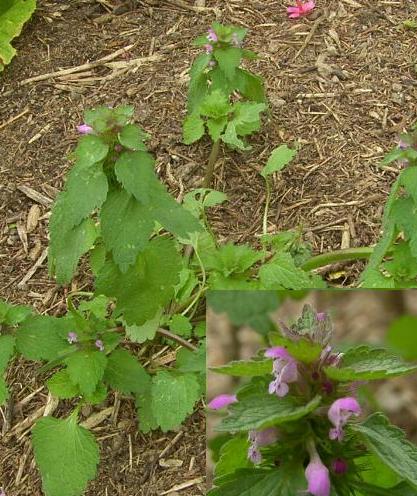Red Dead-nettleScientific Name: Lamium purpureum |
Annual, spreading by seed but late germinated plants may overwinter and the spreading stems take root at nodes. Seeds usually remain viable in the soil for 4 to 6 years, but some have been recovered after about 20 years, which germinated. Not a particularly
invasive weed. A small amount of sweet nectar can be
sucked from the base of the flower. The young leaves can be added to salads or stir-fried, but the flavour is not great.
It is not reported much in folk medicine, but an infusion of the top-growth has been used for headaches.
The dark green, hairy leaves have a scalloped edge, and a dull appearance. They are attached to the square stems with a short petiole in opposing pairs. The upper leaves can have a purplish tinge.
It forms low clumps which can be up to 45 cm in height if growing conditions are good.
The purple-red flowers occur in whorls at the top of the stems from April to October.
Hoe or hand pull, it is easily uprooted and the fibrous roots do not regrow provided the basal growing point is removed. In wet weather shoot fragments may take root if partially buried.
Weedkillers to use:-
Dichlobenil ( Casaron G4 ) prevents emergence among
established woody plants.
Paraquat, Diquat, contact action killing
top growth.
Henbit Dead-nettle (Lamium amplexicaule), an annual, is similar, but the leaves are attached directly to the stems without a petiole. Ground Ivy makes similar clumps at first, but is a perennial and is quite invasive.
Follow these links for further details on Weeds, Weed Removal and Weed Prevention.
